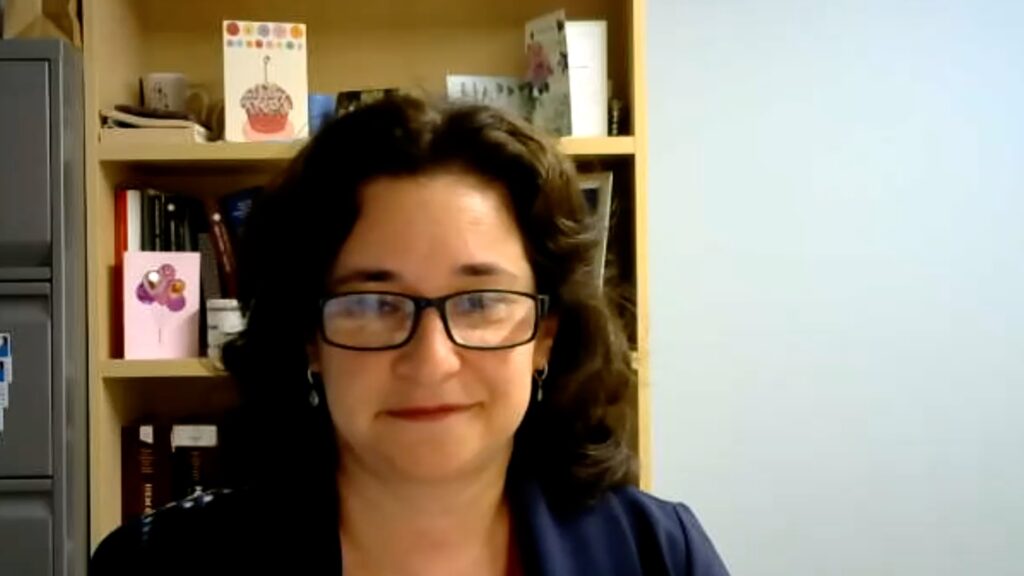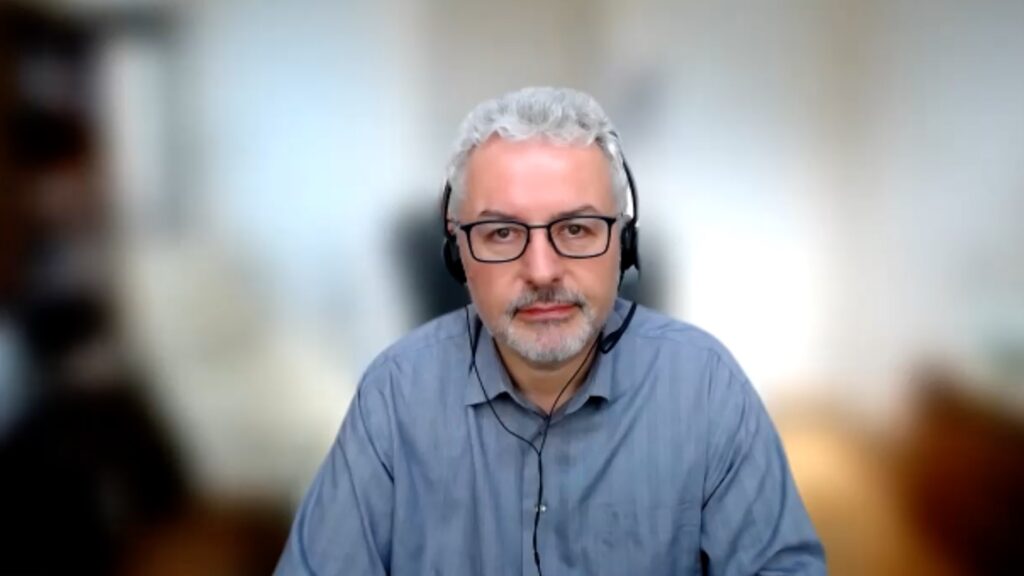touchHAEMATOLOGY coverage of data presented at EHA 2024:
The phase II RESTORE trial evaluated elritercept (KER-050), an investigational treatment for myelofibrosis (MF) and ruxolitinib-associated cytopenias. Elritercept, targeting specific transforming growth factor-beta (TGF-β) ligands to improve haematopoiesis, was tested alone and in combination with ruxolitinib. In Part 1 (N=41), the trial assessed safety, tolerability, pharmacokinetics, and efficacy across doses (0.75-4.5 mg/kg). Results showed a 37% transfusion dependency among participants, with common adverse events including diarrhoea (22%), thrombocytopaenia (17%) and fatigue (15%). The recommended dose for Part 2 was 3.75 mg/kg, up-titrated to 5.0 mg/kg. Erythropoiesis improved in non-transfusion-dependent participants, with 54% showing increased hemoglobin (Hgb). Transfusion burden was reduced by ≥50% in 38% of transfusion-dependent participants. Additionally, spleen size and symptom scores decreased in 57% and 67% of evaluable participants, respectively. Elritercept showed potential to treat MF-related anemia, cytopenias, and splenomegaly, warranting further analysis.
Prof. Claire Harrison (Guy’s and St. Thomas’ NHS Foundation Trust, London, United Kingdom) presented “Elritercept (KER-050) Demonstrated Potential To Treat Myelofibrosis And Mitigate Ruxolitinib-Associated Cytopenias In The Phase 2 Restore Trial” (Abstract S223) at the 29th European Hematology Association (EHA) 2024 Congress on 13–16th June 2024 in Madrid, Spain.
Questions:
- Please could you provide insights on the efficacy of elritercept in improving haemoglobin levels and reducing transfusion burden in patients with myelofibrosis, particularly in the context of the RESTORE trial findings? (0:13)
- Given that JAK inhibitors often lead to dose-limiting cytopaenias, how does elritercept help in managing these side effects, and what have been the most notable outcomes in the RESTORE trial regarding this issue? (2:43)
- Can you elaborate on how elritercept has shown potential in reducing spleen size and improving symptoms like total symptom score (TSS) in patients with myelofibrosis? (4:01)
- Considering the preliminary data from the RESTORE trial, what are the next steps for researching elritercept, and how might its use change the current treatment landscape for myelofibrosis? (6:21)
Associated abstracts:
- Díez Campelo M, et al. Durable Clinical Benefit With Elritercept (KER-050) Treatment: Findings From An Ongoing Phase 2 Trial In Participants With Lower-Risk MDS. European Hematology Association (EHA) 2024 Annual Congress. Abstract S183.
- Díez Campelo M. Durable Clinical Benefit With Elritercept in Patients With Lower-Risk MDS: María Díez Campelo, EHA 2024. touchHAEMATOLOGY.
- Harrison C, et al. Elritercept (KER-050) Demonstrated Potential To Treat Myelofibrosis And Mitigate Ruxolitinib-Associated Cytopenias In The Phase 2 RESTORE Trial. European Hematology Association (EHA) 2024 Annual Congress. Abstract S223.
- Tan S, et al. Activin A Inhibition By Elritercept (KER-050) Is Associated With Evidence Of Cardiovascular Benefit: Translation Of Preclinical Observations To Humans With MDS. European Hematology Association (EHA) 2024 Annual Congress. Abstract P760.
- Valcárcel D, et al. Reduced Ferritin And Increased Bone Specific Alkaline Phosphatase In Participants With Lower-Risk MDS Treated With Elritercept (KER-050) Support Potential To Rebalance The Osteohematopoietic Niche. European Hematology Association (EHA) 2024 Annual Congress. Abstract S302.
Disclosures: Prof. Claire Harrison has received honoraria from Novartis, CTI BioPharma Corp, Geron, Janssen and AbbVie; has served in a consulting or advisory role for Promedior, Celgene, AOP Orphan Pharmaceuticals, Sierra Oncology, Novartis, CTI, Gilead Sciences, Shire, Roche, Janssen, Geron, Galecto, Constellation Pharmaceuticals and Keros Therapeutics; has served on the speakers’ bureau for Novartis, CTI BioPharma Corp, Geron, Sierra Oncology, Bristol Myers Squibb and AbbVie; and has received research funding from Novartis (institution), Constellation Pharmaceuticals (institution) and Bristol Myers Squibb (institution).
This content has been developed independently by Touch Medical Media for touchHAEMATOLOGY. It is not affiliated with the European Hematology Association (EHA). Unapproved products or unapproved uses of approved products may be discussed by the faculty; these situations may reflect the approval status in one or more jurisdictions. No endorsement of unapproved products or unapproved uses is either made or implied by mention of these products or uses by Touch Medical Media or any sponsor. Views expressed are the speaker’s own and do not necessarily reflect the views of Touch Medical Media.
Abbreviations: ACVR1, activin A receptor type 1; MDS, myelodysplastic syndrome; MF, myelofibrosis; TGF-β, transforming growth factor beta.
Transcript
Hello. My name is Claire Harrison. I’m a hematologist working at Guy’s and St Thomas’ Hospitals, which are based in London, UK.
Please could you provide insights on the efficacy of elritercept in improving haemoglobin levels and reducing transfusion burden in patients with myelofibrosis, particularly in the context of the RESTORE trial findings? (0:13)
So firstly, just want to emphasize that elritercept is a really novel compound which is being assessed in both MDS – and for listeners, it’s useful to reference the MDS presentations at EHA and other meetings – as well as in myelofibrosis. It’s a ligand that affects, TGF-beta superfamily, including activin A. So, effectively, potentially, this is an agent that can improve erythropoiesis right from very early to late stages. So a little bit different from some of the other similar agents targeting TGF-beta superfamily, such as luspatercept, but can also target inflammation and therefore could improve the stem cell niche, symptom burden and spleen as well, potentially.
So, focusing first of all on the RESTORE study: this is a study for patients with myelofibrosis. It’s got a dose-finding and then a dose-expansion element. At the EHA [2024 Annual Congress], I presented, on the behalf of the study team and investigators, the completed data from dose escalation, and then we have a recommended phase II dose, and some of the provisional data at that dose. And interestingly, the dose for MDS and MF is the same. In the study, we’ve been looking at patients with monotherapy, and I always like to see monotherapy data, as well as combination therapy with stable dose ruxolitinib.
And in this study, we saw that there was clear evidence of patients having improvements in surrogate markers relating to haemoglobin, such as serum transferrin receptor, but also patients becoming transfusion independent, as well as reducing the need for transfusions and increasing their haemoglobin. And in particular, a lot of patients receiving the dose of 3–3.5 mg/kg, which is the recommended, going forward dose with an escalation up to 4.5 mg/kg.
Given that JAK inhibitors often lead to dose-limiting cytopaenias, how does elritercept help in managing these side effects, and what have been the most notable outcomes in the RESTORE trial regarding this issue? (2:43)
An important limiting factor of the current backbone of therapy for MF, which is JAK inhibition, is is on target anaemia and particularly thrombocytopenia. And although we have got newer JAK inhibitors – like momelotinib, which also targets ACVR1, for example, and potentially similar parts of the pathway – still, patients do have anaemia with these drugs and often thrombocytopenia.
So, elritercept is of interest: one, because it may well, of course, improve anaemia as we’ve already discussed. But secondly, if it can reduce inflammation and improve the marrow niche, potentially we might see improvements in platelet counts, which might then lead to us being able to optimize the dose or use a JAK inhibitor even for patients with more profound thrombocytopenia. And indeed, in the ongoing RESTORE study, we did see some patients who had improvements in their platelet count, and there were some patients who were able to increase their dose of JAK inhibitor.
Can you elaborate on how elritercept has shown potential in reducing spleen size and improving symptoms like total symptom score (TSS) in patients with myelofibrosis? (4:01)
In terms of myelofibrosis, we have become very accustomed to expecting to see any agent targeting spleen. That’s been linked to spleen size reduction, has been linked to overall survival and of course symptom benefit for patients is important for quality of life.
So first of all, I think very importantly, toxicities of elritercept were really minimal, and the only dose limiting toxicity we saw was actually a significant increase in haemoglobin for patients. So we didn’t see any reduction in quality of life or impairment of total symptom score for patients treated with this agent. And in fact, we did see three patients treated with elritercept who had a 50% reduction in their total symptom score. And many other patients had, reductions but maybe didn’t reach the 50% bar. Now, that’s obviously that’s obviously really important and not all of those symptoms related to anaemia, but we do have to be careful in over-interpreting that given that this is an open label study. Nonetheless, [it is] clearly very important.
In terms of spleen reduction, we did have three patients who also met the, 35% reduction in spleen volume using robust measurements. That’s obviously a very objective measure. How could that possibly be? Well, we definitely didn’t see that with placebo, so we don’t expect that kind of fluctuation on no treatment. These were not patients whose ruxolitinib dose was increased. So I think, one: we’ve observed it. Two: we have to say that this is probably to do with remodeling of the stem cell lesion improvements in haemapoiesis as a result of the anti-inflammatory effect of this drug. So, I think this is really exciting and important and demonstrates that the drug has the ability to impact on several aspects of myelofibrosis and how it affects our patients.
Considering the preliminary data from the RESTORE trial, what are the next steps for researching elritercept, and how might its use change the current treatment landscape for myelofibrosis? (6:21)
I think the preliminary data from the RESTORE trial, which is still ongoing, so if you’ve got patients, this is a real call to arms. Do you think? I hope you’re as excited by this data as I am. Do think about putting them into the study.
We want to continue to get more data. We want to be recruiting patients at the dose which we know is more effective; although we did share a cameo of a patient who actually became transfusion independent on the lowest dose, and that transfusion independence lasted for 104 weeks. So we want to collect more data, understand the wider benefits of elritercept; we’ve spoken a bit about those, haven’t we? Improvements platelet count, improvements in symptoms in spleen, and then perhaps also what might be happening to the bone marrow architecture. And then, for those of you who’ve looked at the other abstracts that were presented at EHA, regarding this drug in myelodysplasia and the wider effects, it is an anabolic drug, it does improve cardiac function, it does reduce ferritin levels. So, we need to understand that a bit better.
I think this drug will probably hopefully have a place for our patients with myelofibrosis. Those patients who who maybe have earlier disease with just mild anaemia but not necessarily needing JAK inhibitor treatment could receive this agent, perhaps. It would need to be studied a bit in a bit more detail. Currently, our monotherapy patients are refractory or failed JAK inhibitor, or not eligible. And or also, as we’ve already discussed, in combination with a JAK inhibitor to allow us to use a better dose. Or as a backbone in combination with other agents to support their use for patients with myelofibrosis. So, I think it’s got great potential, and I’m looking forward to seeing more data to come.
Interviewer/Editor: Helen Bowden
Cite: Harrison C. Potential of elritercept (KER-050) to treat myelofibrosis: RESTORE trial. touchHAEMATOLOGY. July 29 2024.






